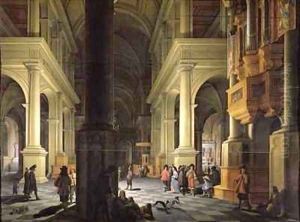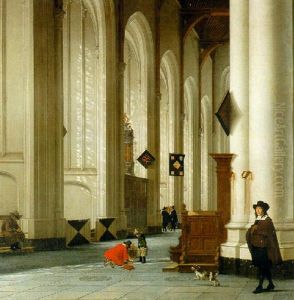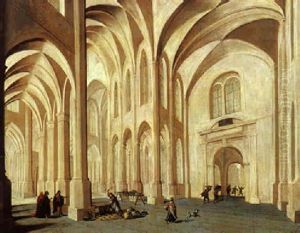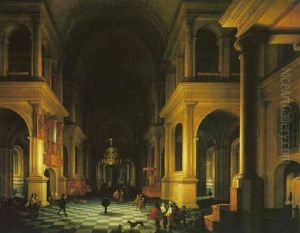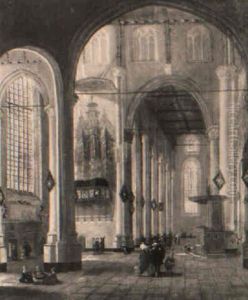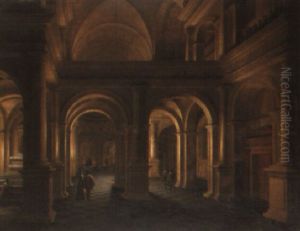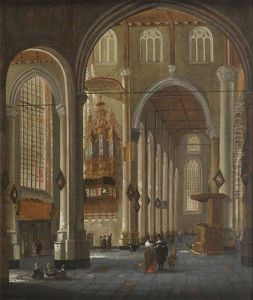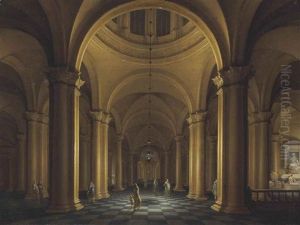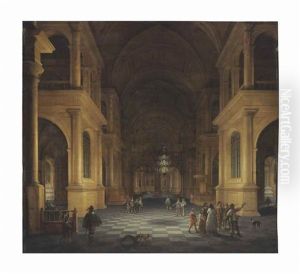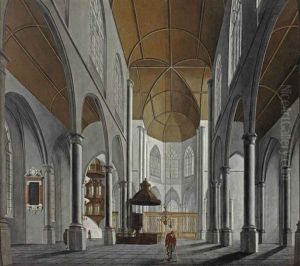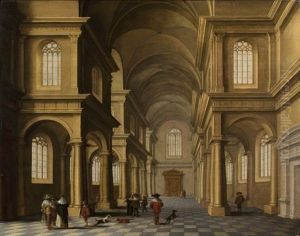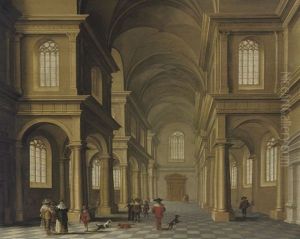Anthonie Delorme Paintings
Anthonie Delorme, also known as Anthonie de Lorme, was a Dutch painter primarily known for his interior scenes of churches. Born in 1610 in Rotterdam, Delorme established himself as an artist in an era that is celebrated for the Dutch Golden Age of painting, a period characterized by a tremendous wealth of artistic talent and productivity in the Netherlands.
Delorme's work is distinguished by its meticulous attention to the architecture and lighting within church interiors. He was particularly adept at capturing the grandeur and tranquility of these sacred spaces. His paintings often feature the ornate Gothic and Renaissance architecture of Dutch churches, rendered with precise detail and a masterful use of perspective. This was a common subject among Dutch artists of the time, who found a ready market for church interiors among art collectors.
While not much is known about Delorme's life and training, it is evident that he was influenced by the works of other artists who specialized in church interiors, such as Pieter Saenredam and Emanuel de Witte. Delorme's paintings typically include a few human figures, which serve to highlight the scale and to add life to the serene atmosphere of the vast church interiors he portrayed.
Unlike some of his contemporaries, Delorme did not achieve widespread fame during his lifetime, and his works were often overshadowed by those of his peers. Nonetheless, his contributions to the genre of church interior painting are recognized for their quality and for the unique perspective they offer on Dutch ecclesiastical architecture of the 17th century.
Anthonie Delorme's career was spent in Rotterdam, where he continued to paint until his death in 1673. Today, his works can be found in various museums and collections, where they are appreciated for their quiet beauty and historical value. Delorme's legacy lives on through the serene and contemplative spaces he created on canvas, which continue to be studied and admired by art historians and enthusiasts alike.

